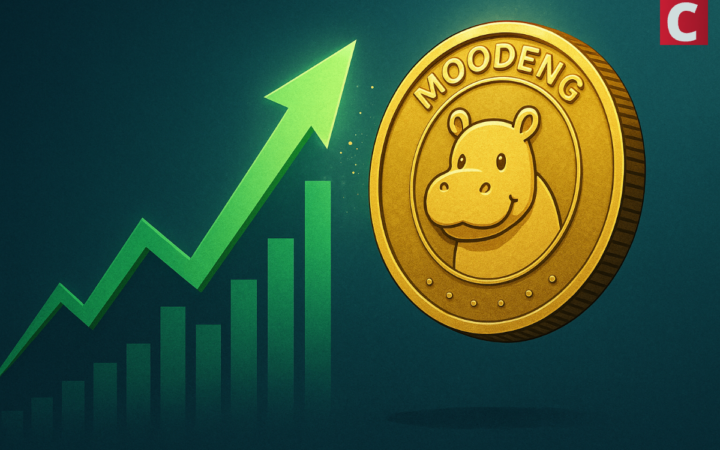
Please check out latest news, expert comments and industry insights from Coinspeaker's contributors.
The face of traditional banking has undoubtedly changed in the past decade, FinTech and emerging technologies are proving to be the future of finance.

The traditional banking system has long sidelined most people despite being touted as the primary go-to financial intermediaries. According to a report by the Liberty Street of Economics, one in twenty households in the US are unbanked (do not have a checking or demand deposit account). It is even worse in developing countries with continents such as Africa representing the highest number of unbanked people (57% do not have a traditional bank account).
While some of the unbanked population have solid reasons for avoiding banks, there is a looming danger which could result in a wider economic gap between the rich and the poor. For starters, unbanked people have often found themselves at crossroads when seeking various financial services such as credit loans or mortgage financing. Additionally, the ones accessible to them come at a huge cost with little to no protection from financial regulatory agencies.
What then can be the solution? Thanks to the emergence of modern-day technologies, the trends are changing. More people are adopting FinTech products that feature some of the financial services offered by traditional banks. In Africa, countries like Kenya have made huge breakthroughs through MPESA, a FinTech product designed to facilitate money transfers while offering lending and borrowing services.
That said, these upcoming FinTech products are yet to fully meet the needs of the unbanked population. This is because they follow similar models to traditional banking ecosystems, which means that users have to rely on the slow and cumbersome KYC verification process. Well, this could soon change following the debut of nascent technologies such as blockchain. Ideally, blockchain introduces a distributed ecosystem featuring verifiable and tamper-proof on-chain data.
Bitcoin may have started as a movement against the banks, but its underlying technology ‘blockchain’ appears to be the much-needed solution to enhance KYC processes globally. At the core, blockchain ecosystems are designed as distributed ledgers meaning anyone with permission can verify the data recorded on a particular chain. Notably, some blockchains such as Bitcoin’s are public while others are designed as private or hybrid ecosystems.
So, what’s the value proposition to the banking system? There are a couple of areas where blockchain can significantly improve today’s banking, but for now let’s focus on the KYC aspect. Traditionally, banks have run centralized databases which means that all information gathered from clients is stored in a single source. As much as it has been effective, there are major security risks attributed to such centralized models, not to mention the cumbersome process of data collection and recording.
With blockchain in the picture, the KYC process could be much simpler for banks. Today, we have blockchain-built ecosystems such as Blockademia which help businesses and individuals to transform into smoother KYC processes. This platform is designed as a decentralized information system that enables the issuing and checking of KYC documents amongst other certificates, including diplomas, state documents and insurance policies.
Blockademia ecosystem ensures the immutability of the recorded KYC data by leveraging the Cardano blockchain as its base infrastructure. Essentially, stakeholders can enter a data entry on Blockademia featuring the exact time and date, after which it is recorded on the Cardano blockchain. Consequently, these data entries can be verified, making it seamless for both banks and prospective clients to navigate the KYC process.
Looking at these possibilities, it is evident that blockchain’s value is still largely undervalued by traditional financial institutions. Nonetheless, there are some players, including regulators such as the Bank of England and China’s PBoC that are already investing in blockchain infrastructure. Ultimately, these systems will likely be integrated with local banks and other financial service providers.
The music does not stop with blockchain technology, cryptocurrencies have taken the game a notch higher by enabling the development of Decentralized Finance (DeFi). This nascent crypto niche took off in the summer of 2020 to become a fundamental part of the market. Simply put, the DeFi ecosystem is a replication of traditional finance, with the only difference being the former is decentralized (consumers do not have to go through an intermediary).
As far as innovation goes, the DeFi market has gone through multiple phases; it now features financial services such as loans, money markets and decentralized exchanges. Unlike traditional banking services, DeFi protocols are designed as permissionless ecosystems which means that anyone can access the featured products. This is particularly lucrative for the unbanked population which has little to no faith in centralized financial institutions.
Given the amount of data required to offer such services, DeFi-oriented innovators like Oraichain have designed AI-powered oracles to enhance the efficiency of smart contracts. This AI oracle provider connects the nascent world of blockchain ecosystems with AI-focused technologies, enabling innovators in the DeFi market to seamlessly source off-chain data through the platform’s data hub. In addition, DeFi users across featured blockchains can use the data hub to monetize, analyze and enhance their data quality through Oraichain’s AI assistant.
While DeFi may be evidently in its early stages, a good number of the existing DeFi protocols are offering higher rates and better borrowing conditions than their counterparts in traditional finance. For instance, the interest on USDT stablecoins on a protocol such as Aave could go as high as 2.63%; much higher than the average 0.06% offered by US banks. Additionally, it is much easier to access the Aave protocol compared to dealing with a local bank.
The face of traditional banking has undoubtedly changed in the past decade, FinTech and emerging technologies are proving to be the future of finance. That said, stakeholders from both divides need to strike a balance by adopting a more collaborative instead of a competitive approach. As narrowed down in the article, blockchain technology and DeFi will play a significant role in this paradigm shift.
Disclaimer: Coinspeaker is committed to providing unbiased and transparent reporting. This article aims to deliver accurate and timely information but should not be taken as financial or investment advice. Since market conditions can change rapidly, we encourage you to verify information on your own and consult with a professional before making any decisions based on this content.

Please check out latest news, expert comments and industry insights from Coinspeaker's contributors.




